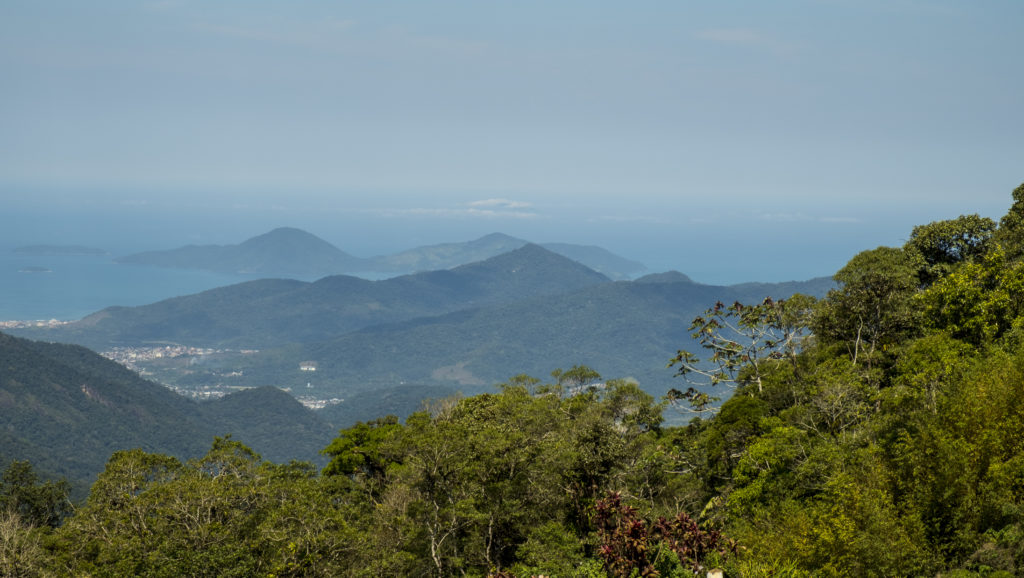If you don’t have access to a journal email us and we’ll send you the pdf of the paper(s).
You can check our publications in at least three websites:
Imperial College website where you can not only find a link to the publications but you can also find a pre-submission version in case you don’t have access to the journal and you need the paper ASAP.
CNPq Lattes (which is more likely to be outdated but is in portuguese)
But here, you can read about some papers that either have shaped or are shaping my research.

Intraspecific variation in species sensitivity to habitat changes
Orme, C. D. L., S. Mayor, L. dos Anjos, P. F. Develey, J. H. Hatfield, J. C. Morante-Filho, J. M. Tylianakis, A. Uezu, and C. Banks-Leite. 2019. Distance to range edge determines sensitivity to deforestation. Nature Ecology & Evolution 3:886-891.
Summary of results
As deforestation in the tropics leads species to extinction, we continue to have a poor understanding of the mechanisms that drive species sensitivity. In this paper, we show that species present strong intraspecific variation in their responses to deforestation, and that distance from geographic range edge determines whether populations will respond positively or negatively to deforestation.
These results emerged from analyses of seven datasets including 378 bird species from 211 sites spanning 2,000 km of the highly threatened Atlantic Forest of Brazil. We found that populations occurring near their range edge were in general rare and increased in incidence with forest cover. However, at about 829 km from the range edge, populations switched their responses to decrease in incidence with habitat cover. We provide evidence that this occurs both within and across species.
These remarkable results challenge the current paradigm that species can be categorised into levels of sensitivity to disturbance, and that behavioural and morphological traits determine which species will be generalists or specialists, winners or losers. They also challenge conservation strategies based on indicator species.
Press release and blog
There was a nice press release on the Imperial College website (here) and we wrote a piece for the Nature Ecology and Evolution Community (here). I encourage you to check it out if you want to know more about what drove us to write this paper and how we did it.
Further questions and current research
Flavia Bellotto Trigo and Ben Howes are doing their PhD in the lab looking to address some of the questions that arise from the findings we obtained in this paper. For instance, could physiological stress be the driver of intraspecific variation in responses to habitat loss? Or are species interactions responsible for the patterns we found? Check their individual pages to find more about the work they are doing.
Related papers
Hatfield, J. H., C. D. L. Orme, J. A. Tobias, and C. Banks-Leite. 2018. Trait-based indicators of bird species sensitivity to habitat loss are effective within but not across data sets. Ecological Applications 28:28-34.
In this paper, we show that response traits, which are the functional traits related to species’ responses to habitat change, can often show very high explanation in models assessing what drives species to local extinction. However, when we selected the most important traits and then applied on a similar database from the same region, the results were very weak. This suggests that it’s most likely a spurious correlation driving the high explanatory power in models of response traits.

Edge effects
Although I don’t have any current active research on habitat edges at the moment, I have a long term interest in what happens in forest edges and how they affect community assembly and species presence. Below are my papers on edges effects per se, or where edge effects were used to infer habitat fragmentation.
Harrison, M. L. K., and C. Banks‐Leite. In press. Edge effects on trophic cascades in tropical rainforests. Conservation Biology 241:108368
Püttker, T., et al. 2020. Indirect effects of habitat loss via habitat fragmentation: A cross-taxa analysis of forest-dependent species. Biological Conservation 241:108368.
Hatfield, J. H., J. Barlow, C. A. Joly, A. C. Lees, C. H. Freitas Parruco, J. A. Tobias, C. D. L. Orme, and C. Banks‐Leite. 2020. Mediation of area and edge effects by adjacent land use. Conservation Biology 34:395-404.
Betts, M. G., et al. 2019. Extinction filters mediate the global effects of habitat fragmentation on animals. Science 366:1236–1239.
Pfeifer, M. et al. 2017. Creation of forest edges has a global impact on forest vertebrates. Nature 551:187–191.
Neate-Clegg, M. H. C., E. C. Morshuis, and C. Banks-Leite. 2016. Edge effects in the avifaunal community of riparian rain-forest tracts in Tropical North Queensland. Journal of Tropical Ecology 32:280-289.
Ewers, R.M. & C. Banks-Leite. 2013 Fragmentation impairs the microclimate buffering effect of tropical forests. PLoS One 8:e58093
Banks-Leite, C., R. M. Ewers, and J. P. Metzger. 2010. Edge effects as the principal cause of area effects on birds in fragmented secondary forest. Oikos 119:918–926.
Banks-Leite, C., & R. M. Ewers. 2009. Ecosystem Boundaries. In: Encyclopedia of Life Sciences. John Wiley & Sons, Ltd: Chichester.